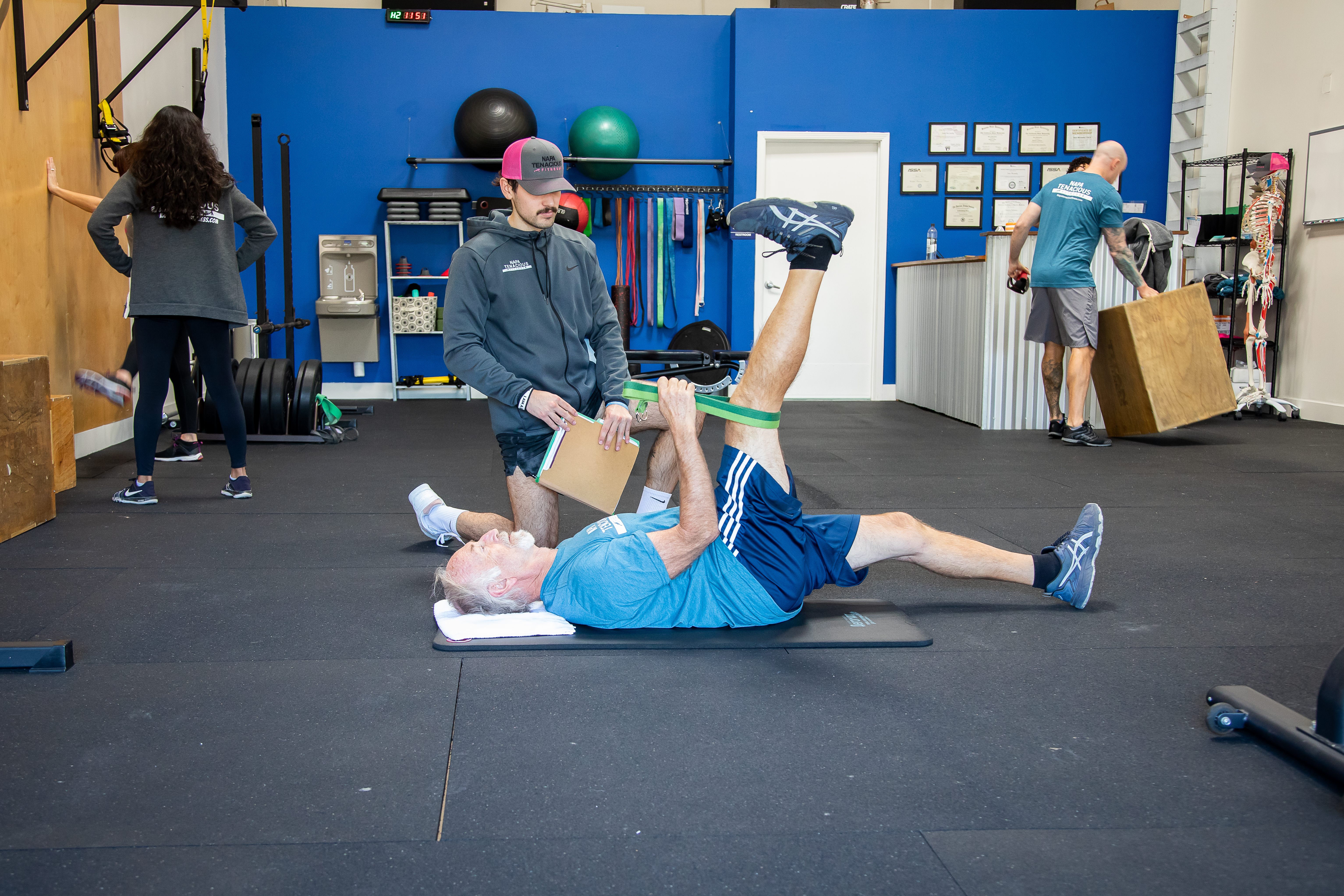Some of us don’t realize how vital lower back health is until an accidental injury debilitates us. Quick tweaks to the back can occur from the simplest motions throughout our everyday lives. From lifting up a bag of groceries, to chasing around our kids, to the simple act of getting out of the car can impose a painful back injury altering productivity of an average days functions. Strained muscles, pinched nerves, or compressed disks are injuries one usually doesn’t hear about until it happens to themselves.
To prevent catastrophic back injuries, we must appreciate the spine’s structure. Like a building, the spinal column consists of architecture holding it upright. These brackets that hold our spine together are muscles, tendons, and ligaments. A rickety old building might have a few rusty nails, loose screws, and rotting wood. Our spine isn’t much different if it lacks a structured and adherent exercise routine. Below are a few exercises that reinforce the connective tissue holding the bones of our spine in place:
- Standing posterior pelvic tilt: In a standing position, place your hands on the crests of your hips. Actively “tuck” the crests of your hips toward your rib cage. This motion should shorten the area between your ribs and the crests of your hips while simultaneously straightening the lumbar spine. Muscular activation should be experienced in the abdominals, lower back, and glutes. This exercise is important for activating the psoas muscles attached from the ventral portion of the spine to the hips, the abdominals connecting the lumbar vertebrae to the hips, and the glutes attaching the posterior aspect of the hips to the back of the femurs. Performing two sets of ten repetitions supports muscle strengthening and neuromuscular adaptation to support the lumbopelvic hip complex.
- Straight arm plank: The plank is an isometric exercise. The term isometric means that a muscle is put under tension for a prolonged period in which it remains in static contraction. This form of contraction is a basic form of resistance training that avoids the risk of injury due to its limited demands of coordinated movements. The isometric force allows for stress that will elicit an adaption to match the demands put on the group of muscles supporting the spine and hips. In the case of the muscles surrounding the spine, this isometric exercise is akin to the stabilizing factors the spinal stabilization muscles demonstrate when we stand upright. Therefore, performing an exercise that mimics standing will aid us in standing up right longer. To perform the straight arm plank: find an inclined surface and lean forward with your arms extending and holding up your body. To increase the challenge of this exercise, decrease the elevation of the surface you are supporting yourself on. Performing this exercise for fifteen to thirty seconds, two to three times per week can significantly benefit your back strength.
Possessing a strong, functional, and injury-free back is something we are not simply born with. To avoid lower back injury and decrease the time we are out if an injury were to occur, consistent exercises meant to strengthen our back must be done two to three times per week.
Sean McCawley, the founder and owner of Napa Tenacious Fitness in Napa, CA, welcomes questions and comments. Reach him at 707-287-2727, napatenacious@gmail.com , or visit the website napatenaciousfitness.com.

